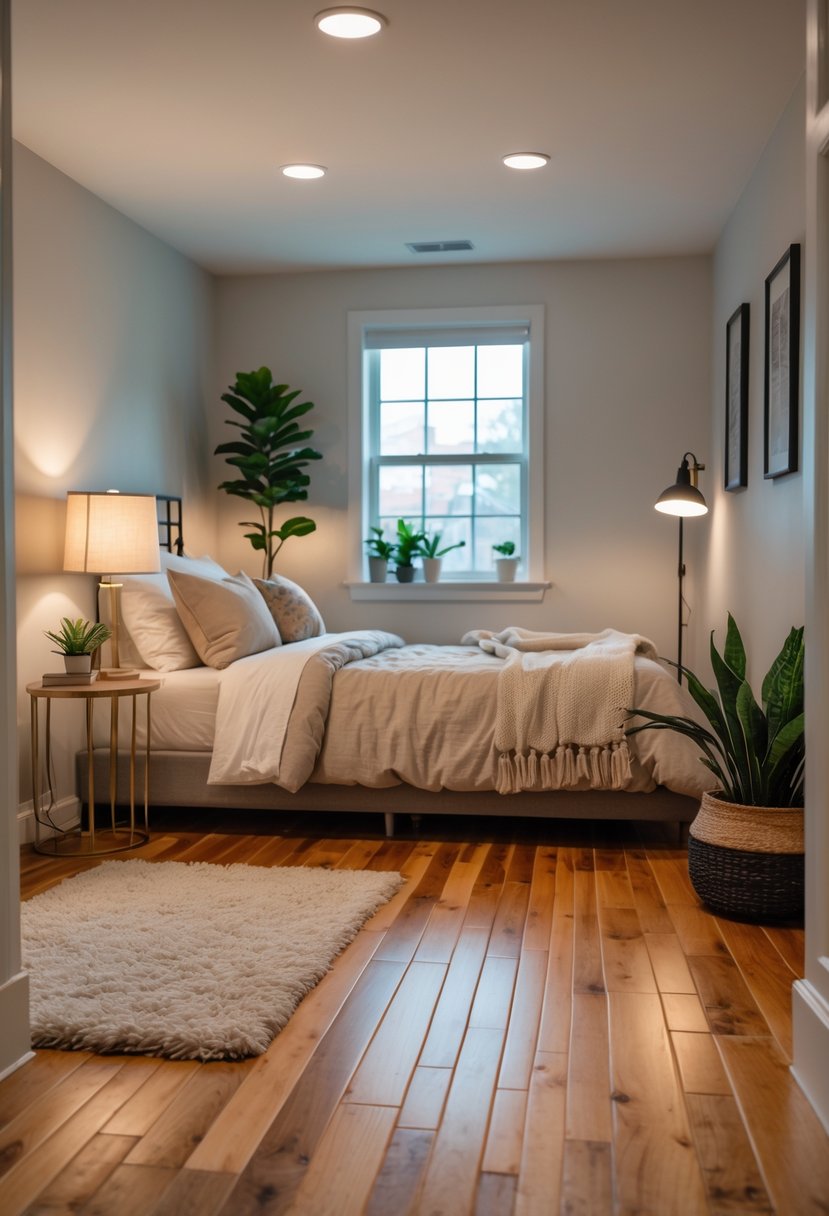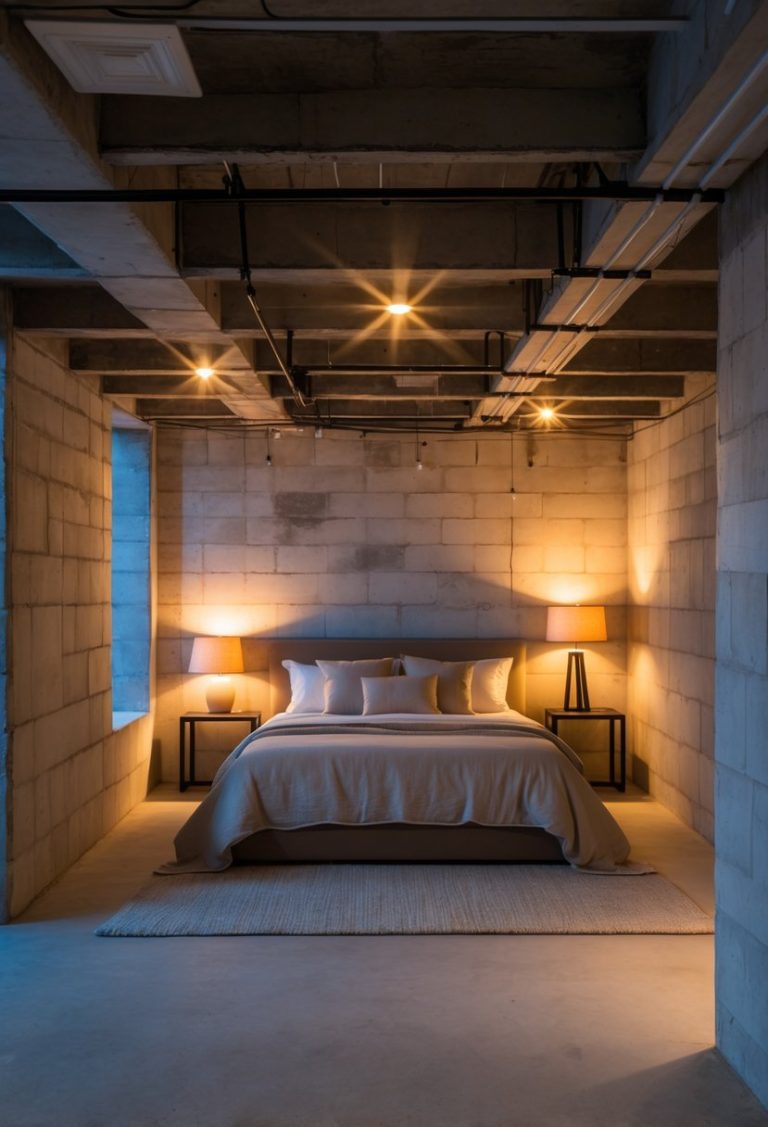Basement Ceiling Ideas: 10 Stylish and Practical Options for Your Space
Basement ceilings often go overlooked when it comes to home improvement, but they play an important role in the overall look and feel of the space. Many basements have low or unfinished ceilings that can make the area feel dark or cramped. Choosing the right ceiling design can improve both the style and comfort of the room.
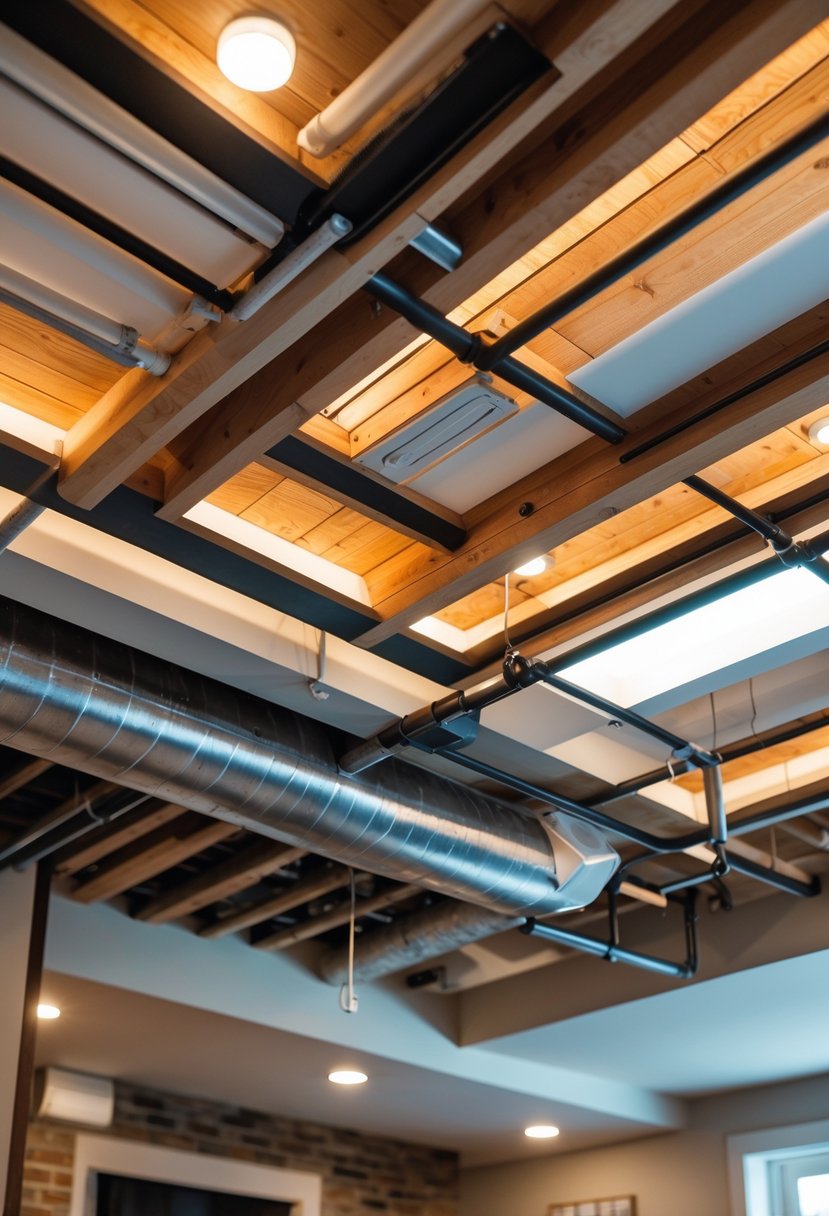
The best basement ceiling ideas help turn an unfinished area into a more inviting and attractive space without requiring a full renovation. Homeowners can explore various materials and techniques to suit their budget and design goals, making it easier to create a basement that feels complete and well thought out.
1) Exposed wooden beams for a rustic look

Exposed wooden beams add a warm and natural feel to a basement ceiling. They create a rustic style that works well with both traditional and modern designs.
Using distressed or reclaimed wood beams can enhance the authentic, farmhouse-inspired appearance. This choice also adds texture and depth to the space without hiding the ceiling’s structure.
2) Painted black ceilings to add depth and drama
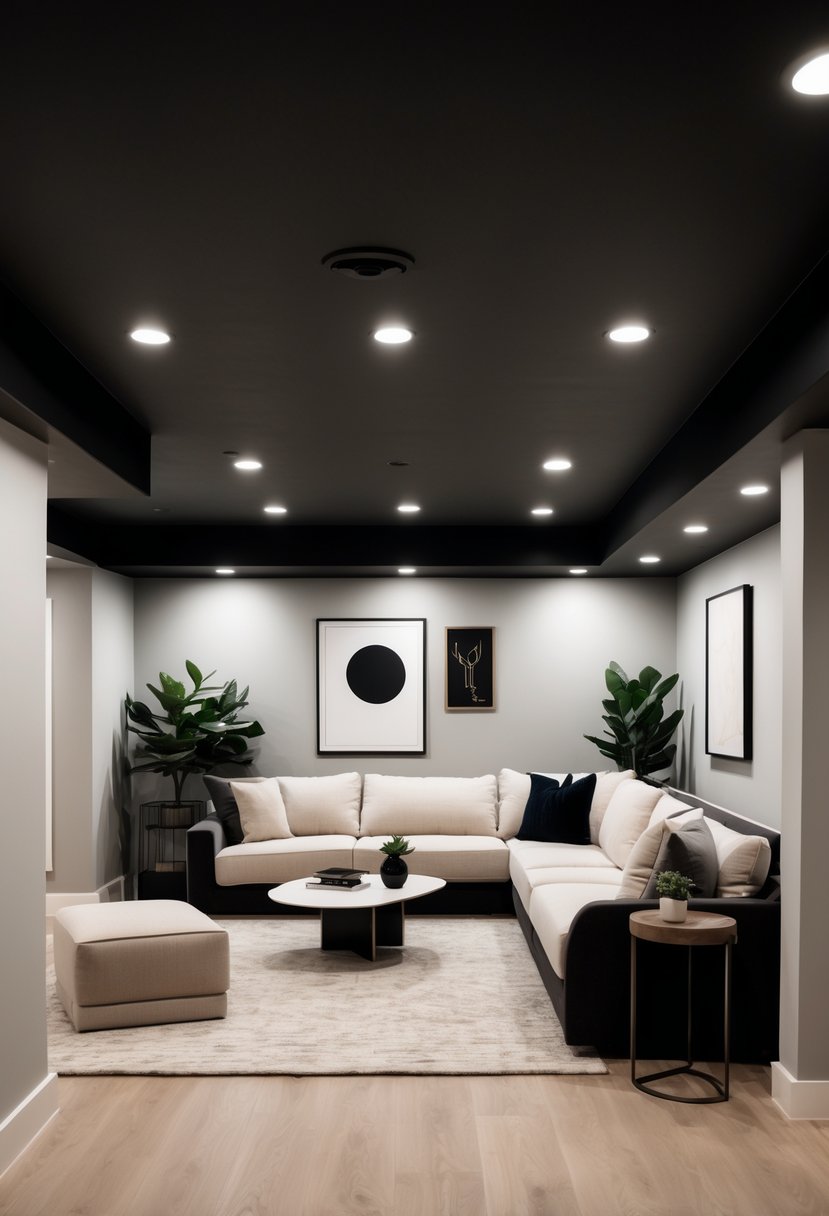
Painting a basement ceiling black can create a sense of depth in the room. It helps hide imperfections and makes the space feel more cozy.
This design works best with good lighting and lighter-colored walls to keep the area balanced. It adds a modern, stylish look without needing much work.
3) Tongue and groove wood paneling for texture

Tongue and groove wood paneling adds clear texture to basement ceilings. The boards fit together tightly, creating a smooth, seamless look.
It works well in basements with low ceilings because the panels are thin. The wood adds warmth without feeling bulky or heavy.
This style is simple to install and can be placed vertically or horizontally. It brings a natural, clean finish to the space.
4) Shiplap ceiling for a modern farmhouse style

A shiplap ceiling adds simple texture to a basement, fitting well with modern farmhouse decor. It creates a clean, warm look without being too busy.
This ceiling style works in many rooms and pairs easily with recessed lighting. It helps make the basement feel cozy while staying stylish and fresh.
5) Fabric-draped ceilings for softness and warmth
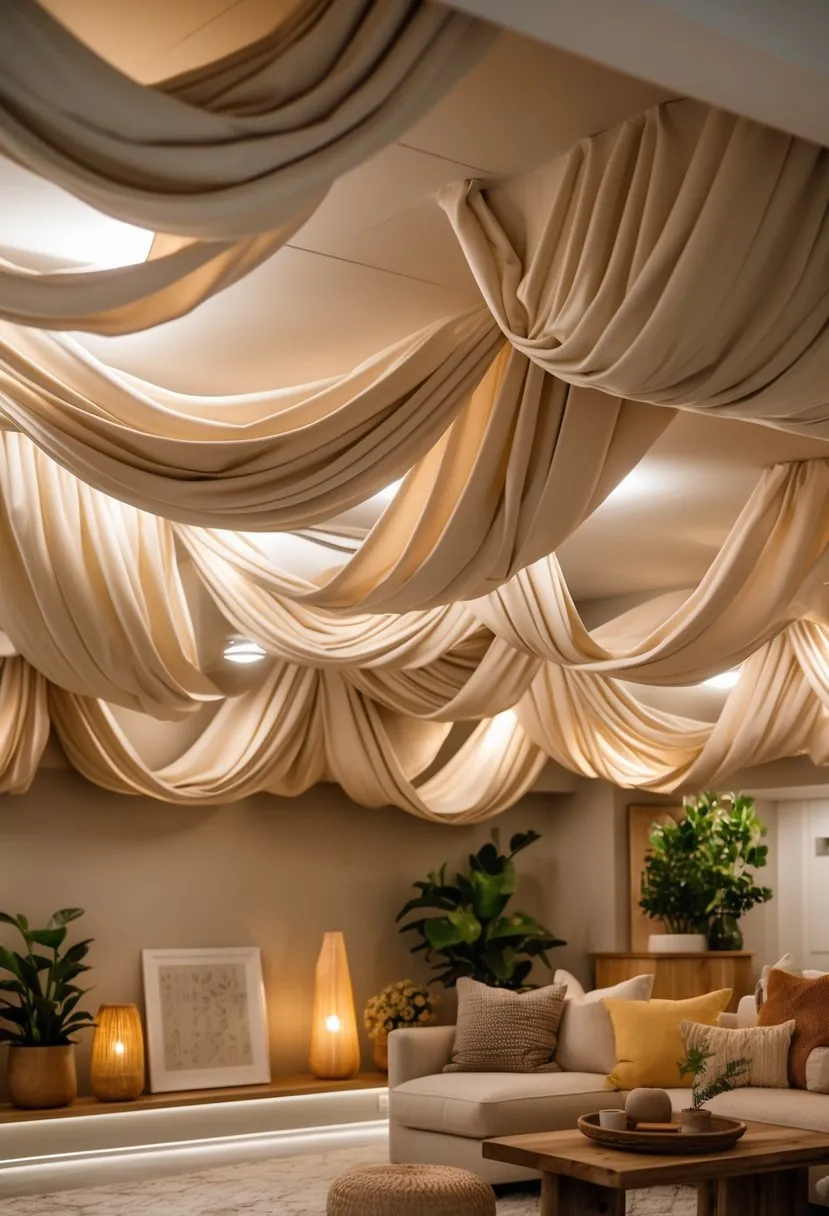
Fabric-draped ceilings add softness to basements, making the space feel warmer. Light, flowing fabrics create an open and airy look.
Heavier fabrics give a cozy, enclosed vibe. They can also improve room acoustics by reducing echo.
This design works well in basements that need a gentle touch without major construction. It is an affordable way to change the ceiling’s atmosphere.
6) Metal tiles for an industrial edge

Metal tiles add a clean, industrial look to basement ceilings. They often come in corrugated or polished styles that catch light and create texture.
These tiles are easy to install and fit well with rustic or modern designs. They can make a basement feel open and stylish without adding bulk.
7) Plywood ceiling with a natural finish

A plywood ceiling with a natural finish highlights the wood’s grain and texture. It creates a warm and simple look without heavy treatment.
This option works well in basements that need a budget-friendly update. It adds character but stays understated.
The natural finish also suits various styles, from rustic to modern, making it a flexible choice.
8) Cedar planks for a cozy cabin feel

Cedar planks bring warmth and natural beauty to a basement ceiling. Their rich color and texture create a cozy, cabin-like atmosphere.
The wood’s natural scent adds comfort and freshness to the space. Cedar is also resistant to moisture, making it suitable for basements.
Installing cedar planks with exposed beams enhances the rustic look. It blends well with other natural elements like stone or wood walls.
9) Drop ceiling tiles for easy access and soundproofing

Drop ceiling tiles are a practical choice for basements. They allow easy access to wiring, pipes, and ducts by simply lifting a tile.
Many tiles also help reduce noise by absorbing sound. This is useful in basements used as media rooms or offices.
Moisture-resistant options are available to prevent warping in damp basement conditions. They also provide a clean, finished look.
10) Herringbone wood patterns for visual interest

Herringbone wood patterns add a unique look to basement ceilings. The angled design breaks up flat surfaces and adds texture.
This style works well with wood panels or plywood, bringing warmth to the space. It can also help cover old ceilings like popcorn textures.
Installing a herringbone pattern creates a subtle yet stylish feature that draws the eye without being overwhelming.
Key Considerations for Basement Ceilings
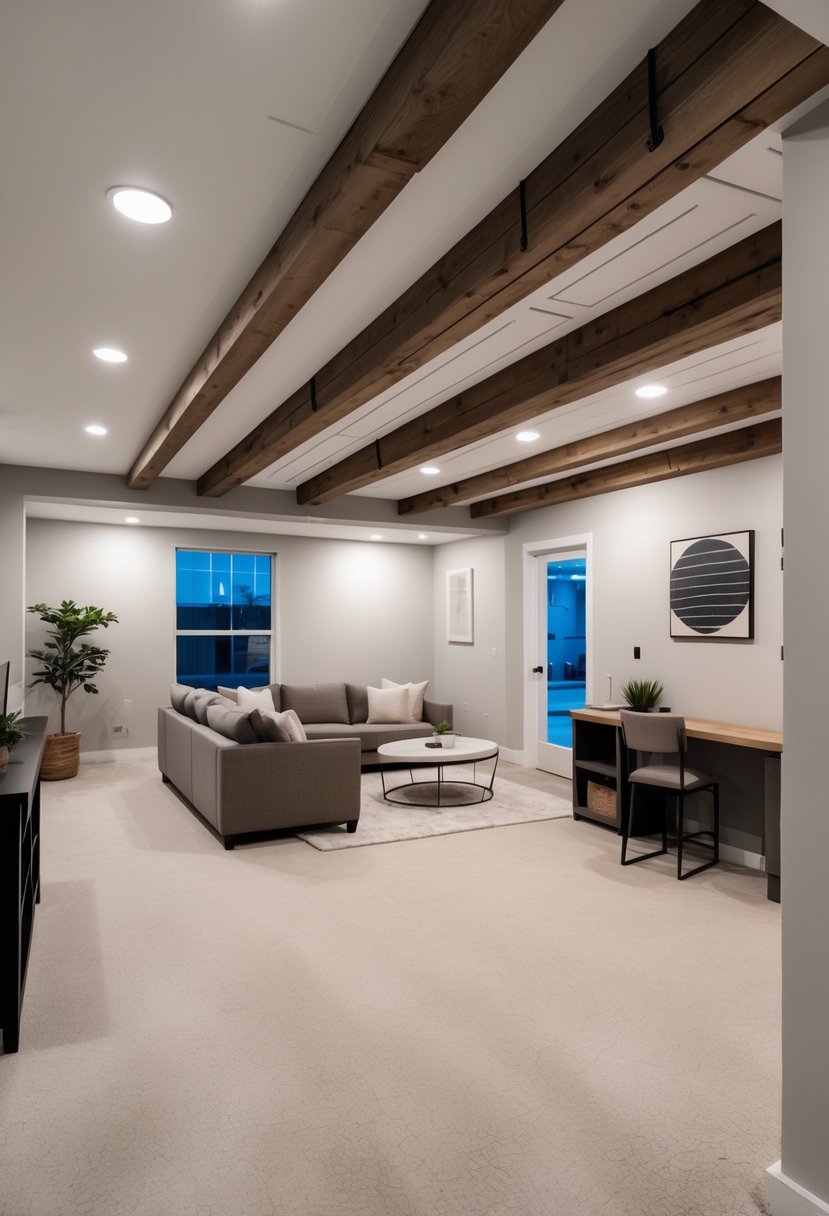
Basement ceilings require attention to moisture control, insulation, lighting, and height. These factors affect the durability, comfort, and look of the space. It is important to choose materials and designs that work well in basement conditions.
Moisture and Insulation Factors
Basements are prone to higher moisture levels, so choosing moisture-resistant ceiling materials is critical. Materials like PVC panels or specially treated wood resist warping and mold growth.
Good insulation helps regulate temperature and reduce energy costs. Spray foam insulation is popular because it blocks moisture and seals air gaps. Fiberglass insulation can be used but needs to be protected from dampness.
Proper ventilation should be installed to prevent moisture buildup. Using a vapor barrier on the ceiling joists can further reduce humidity problems. Moisture damage often starts in hidden areas, so regular checks are necessary.
Lighting and Room Height
Basements usually have lower ceilings, so lighting choices must enhance brightness without taking up space. Recessed lighting is a common option as it fits flush to the ceiling and spreads light evenly.
Using light colors on the ceiling can help reflect light and make the room feel taller. Avoid heavy or dark ceiling finishes that absorb light and make the space feel confined.
If ceiling height is very low, consider drop ceilings with slim tiles or painted open ceilings. These options keep the room feeling open while hiding wiring and plumbing effectively.
Design and Installation Tips
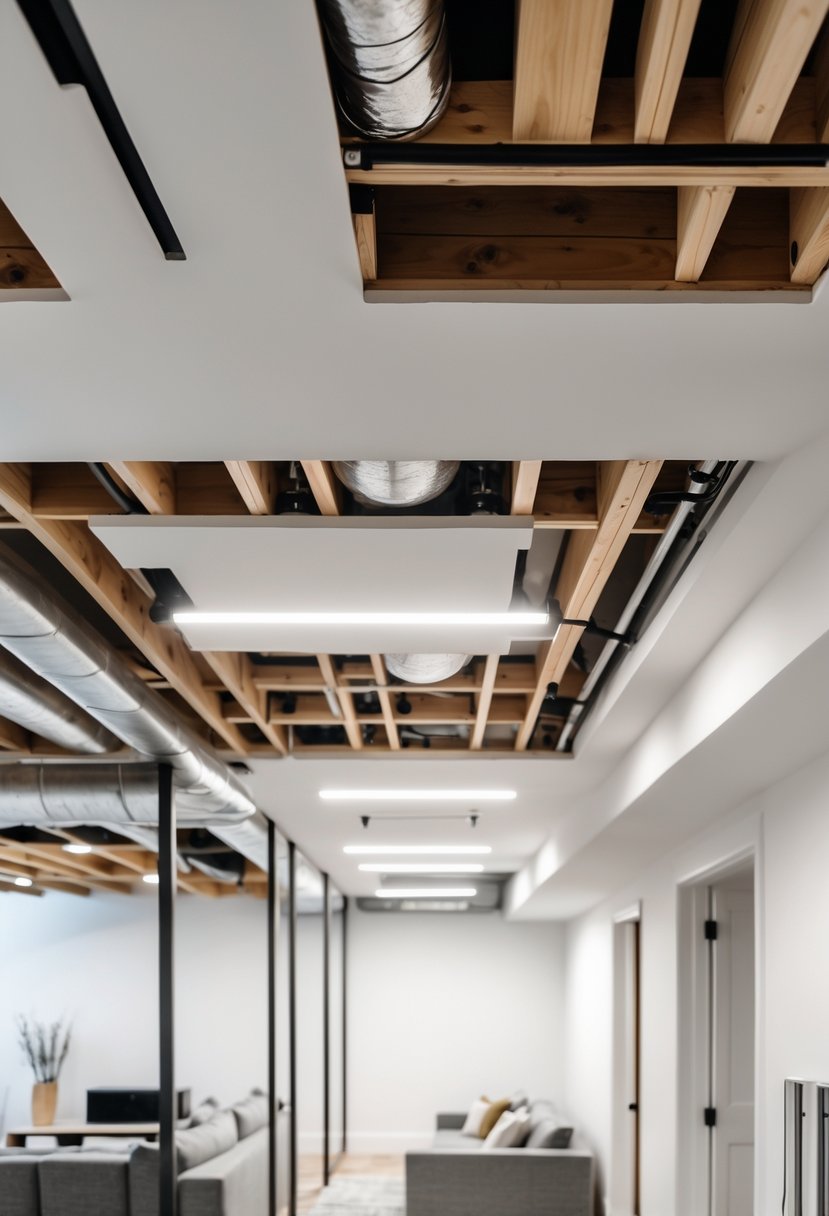
Choosing the right design and installation methods is key for a basement ceiling that looks good and functions well. Careful planning helps avoid common issues like low ceilings or poor lighting.
Maximizing Ceiling Height Visually
To make a basement ceiling feel taller, it is important to minimize visual clutter. Using smooth, light-colored paint on the ceiling reflects light and opens up the space more than dark tones.
Removing or hiding bulky fixtures like ductwork with slim, flush-mounted materials keeps the ceiling line clean. Suspended ceiling tiles should be low profile to avoid losing too much height.
Installing recessed lighting rather than hanging fixtures helps keep the ceiling plane free and intact. Vertical elements like tall bookshelves or curtains can also draw the eye upward, improving the perception of height.
Integrating Lighting with Ceiling Choices
Lighting and ceiling style must work together for the best effect. Recessed lights, LED panels, and track lighting fit well with flat or dropped ceilings and keep the ceiling surface smooth.
When using exposed beams or open ceiling designs, hanging lights can be installed between beams without crowding the space. Choose moisture-resistant fixtures if the basement is prone to humidity.
A layered lighting plan improves function: combine task, ambient, and accent lights. Installing dimmers allows adjustment based on use, making the basement more versatile and comfortable.



